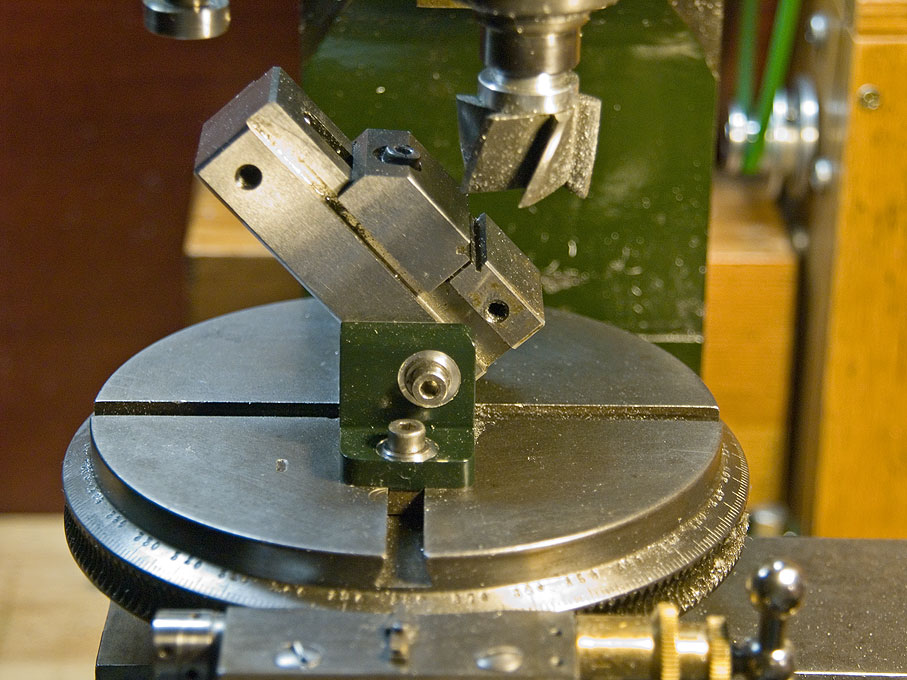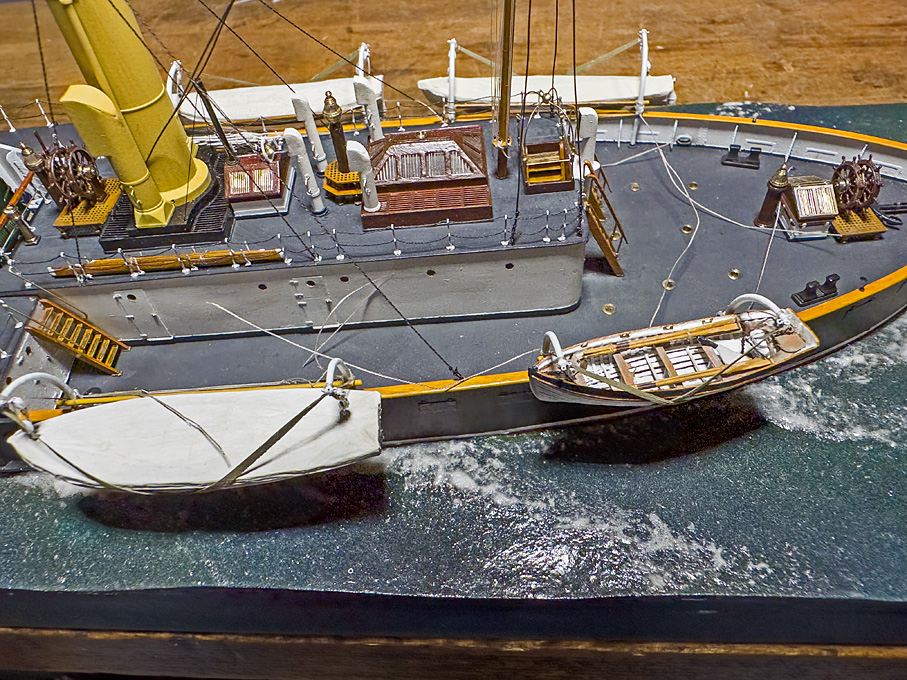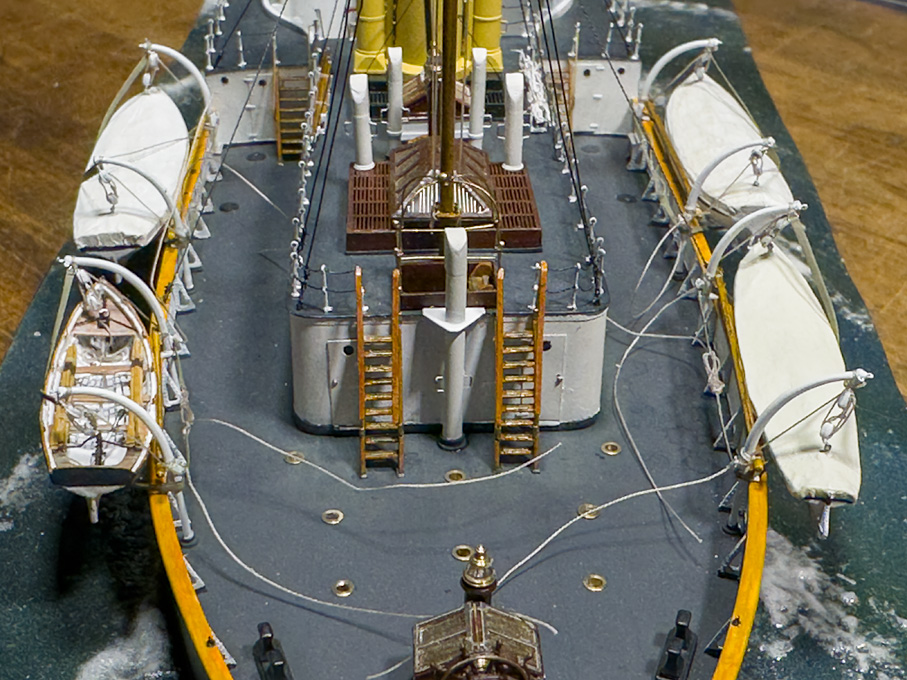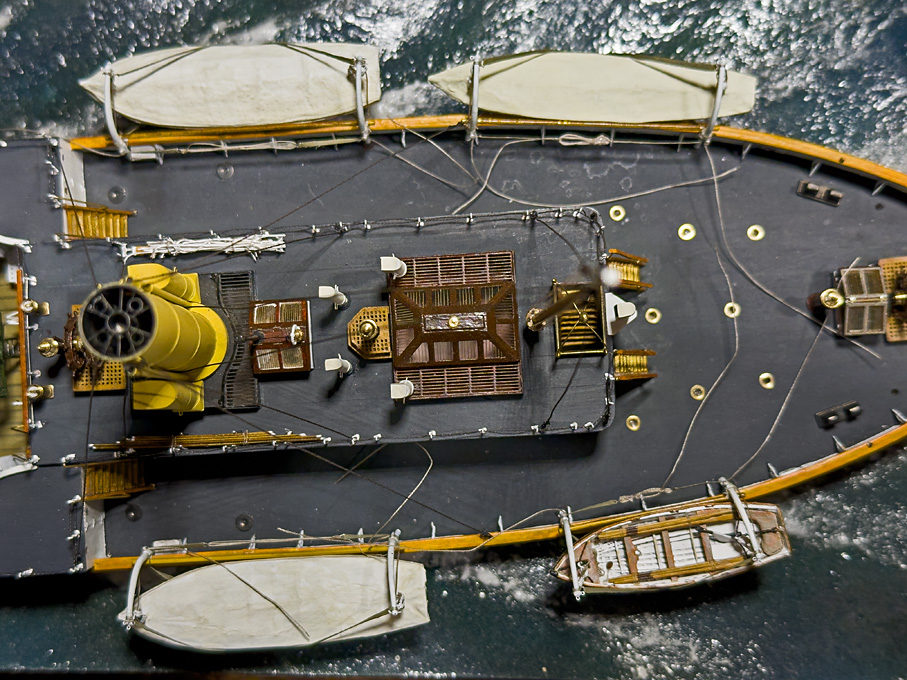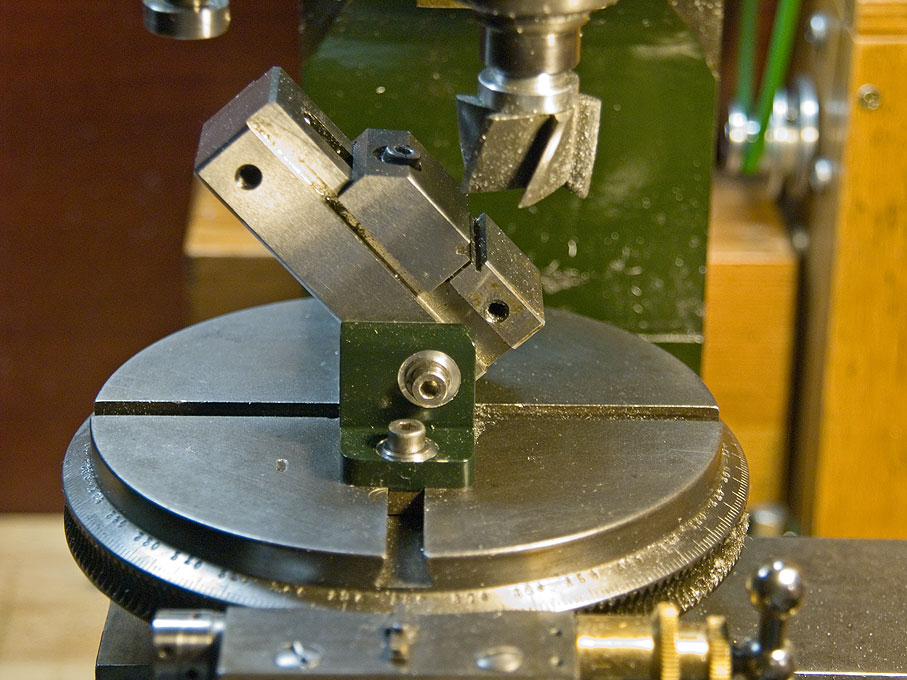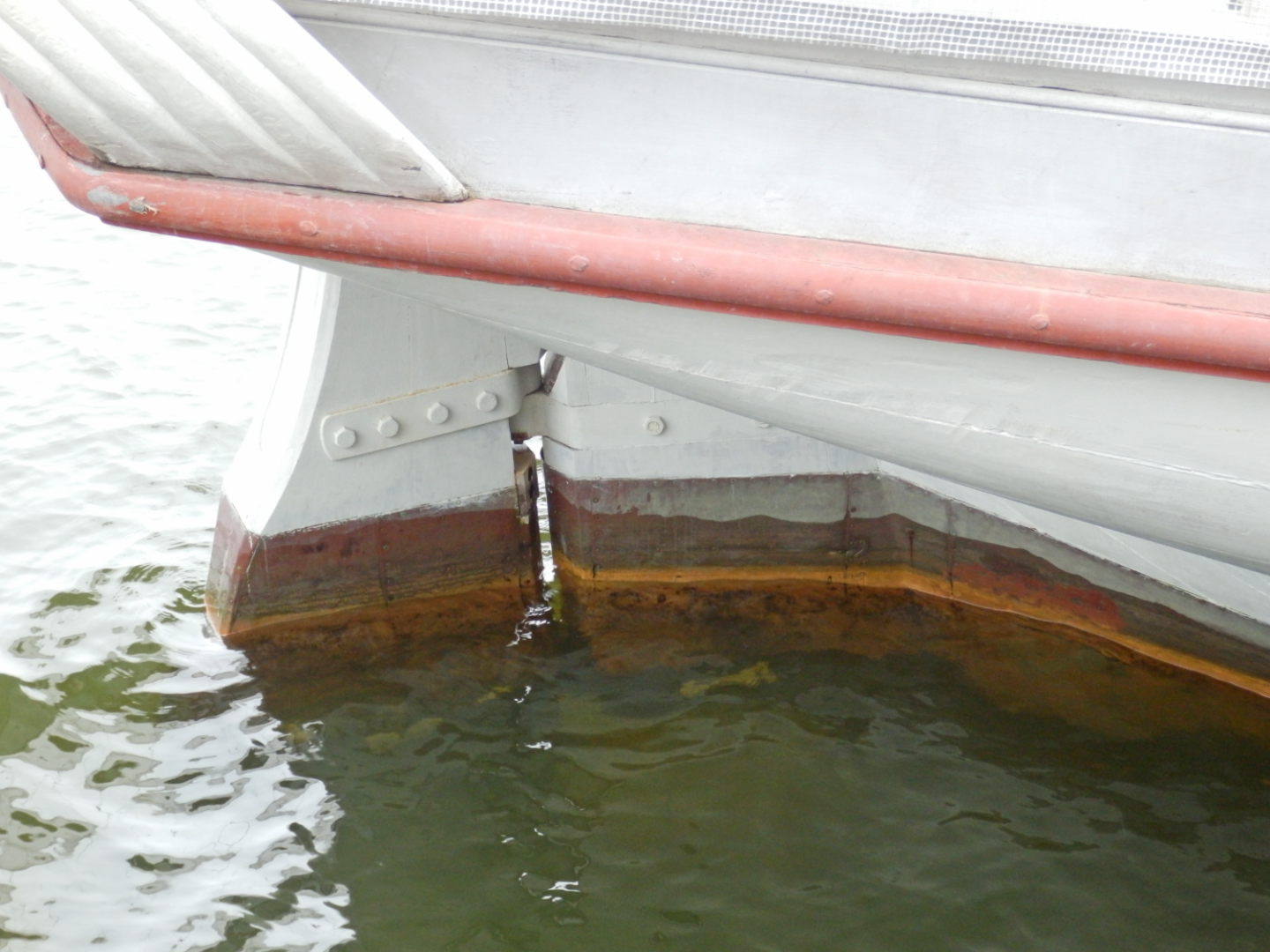-
Posts
6,656 -
Joined
-
Last visited
Content Type
Profiles
Forums
Gallery
Events
Everything posted by wefalck
-
Thanks for the pictures and measurements - it seems that the small one is not available separately, but I have to continue looking. I recently bought some heat-activated silkspan-tape that I want to use for making sails and for this these shoes would be just the right thing, plus the 6 mm-stem fits into my soldering iron.
-
Nice tour de force across some machining and alignment problems ! I have had the same vice for decades and due to its lack of accuracy relegated it really coarse work only a long time ago. I am now using so-called toolmaker insert vices instead. They are available down to 20 mm jaw width and cost around 40 EURO/USD/GBP only. The more parts the greater the chance of accumulating manufacturing and alignment issues. Such sine-type tables are nice, but as you experienced need to be manufactured to close tolerances on all parts in order to ensure overall accuracy. For my little toolmakers vice, I went a different route and made a tilting device from a solid piece of aluminium that has no moving parts per se and only two critical dimensions: the verticality of the sides of the slot into which the vice fits and the parallel alignment of the holes for the fixing bolt vs. the bottom surface. Both dimensions I could control reasonably well with my equipment:
-

Long term CA vapors
wefalck replied to ricky86's topic in Building, Framing, Planking and plating a ships hull and deck
Something I learned as a teenager from my father, who was a chemist working with acrylics in the pharmaceutical industry, is that CA needs humity to trigger polymerisation - therefore one should gently breathe on the are to cemented together and onto the CA applied. Indeed, a big blob of CA will quickly polymerise on the outside, but that forms a shell into which humidity cannot penetrate to support polymerisation. Hence, it may take a while for such a blob to fully cure. -

Long term CA vapors
wefalck replied to ricky86's topic in Building, Framing, Planking and plating a ships hull and deck
In theory, once polymerised, which takes a few seconds, there should be no fumes. The best way to avoid issues with CA is to not use it on things for which other glues/cements are available -
Just a quick question, Gary, concerning this little quilting iron by Clover, which intrigued me. It seems not so easy to get over here in Europe. The question: what is the diameter of the stem of those shoes that slip into the heating element? I was thinking of getting just the shoe and use in my temperature regulated soldering iron. And yes, I also like the jig for bending planks over the edge - simple, no fuss and practical !
-
Thanks, Ab, much appreciated ! ********************************* Installing the ship’s boats 2 It is done! All four boats are suspended from their davits and the work was achieved without major damage to other parts. Good thing that there is not (yet) any brain recorder … because of the mental language that accompanied the process at certain stages. Still there is a lot to be done, such as tidying up the loose ends, making and installing the coils of rope from the runners of the boat-tackles and the longitudinal chain-stays for the davits. To be continued ....
-

Pulled the Trigger == Lathe coming
wefalck replied to kgstakes's topic in Modeling tools and Workshop Equipment
Well, I would rather first get a bit of experience in turning, as the quality of all your parts depends rather on the precision with which you have turned down the jaws. You would need a round piece of very good quality, such a ground piece of tool-steel. Onto this you tighten the jaws and then you can turn the outside of the jaws. However, you just end up with a set of stepped soft jaws. If it was me, I would get myself one of those self-centring chucks from Sherline - I think they do them with the right thread for the Taig, but I am not sure. I have several of those Sherline chucks and they are perfectly adequate for our kind of work. Having said that, I find that I rarely use the 3-jaw-chucks for modelling work, they are mainly used for tool-making. Whenever possible, I use collets. much safer to work with. -

What kind, brand and where do you buy your end mills?
wefalck replied to rlb's topic in Modeling tools and Workshop Equipment
Yep, a milling machine can be used for turning as well. For amateurs, military field-use or on board of small ships in history, combination machines were developed (see www.lathes.co.uk) that could do turning, boring, and milling with little or no change of set-up. With modern CNC-machines the distinction between these operations also has faded away, as the work-piece would be chucked onto driven axes and then driven or stationary tools applied. Another example for this 'relativity' is that lathe boring-bars can be used in a boring-head on a milling-machine ... For the moment I am well kitted-out, but I used to be always on the look-out on ebay for lots of such carbide tools discarded by industry. There are small traders who buy them off industrial companies in bulk and then sell them in amateur-sized lots. You may get good cutters for less than 1 EUR/USD/GBP per piece. OK, wood can dull cutters quickly, but they usually lasted me for years. -
Roger, not sure that your conclusions are all correct. There was intermediate period in iron- and armoured-ship development, when they reverted back to composite construction. There were two reasons: one was that in experiments (these are e.g. documented for France in the Aide mémoire de l’artillerie naval 1873ff) it was found that when armour plates were attached directly to the ships structures, the impact of projectiles weakend these structures; a wooden backing provided a sort of resilient buffer that distributed the stresses. On the other hand, iron hulls fouled fast and it wasn't until 1860 that the Bremen captain Rathjen developed the classical red-oxide coloured anti-fouling paint that contained arsenic and mercury compounds. In the late 1860s already other colours became available. Nevertheless many navies around the world relied on copper- or Munth-metal-sheathing well into the 1890s. For reasons of galvanic corrosion, these could not be attached directly to iron plating, so that iron hulls were first sheathed in wood, onto which the copper or Muntz-metal was applied. I am not aware that zinc sheathing was used on iron ships. I think it would have been eaten away very quickly by galvanic corrosion, if there were any metal parts on the ship exposed to the water. After all, this is way today we put sacrifical zinc anodes onto our ships. The French sources are quite good and one should e.g. scan the Atlas du Genie Maritime etc. for cross-section of hulls of ships of this time in order to see how they were constructed. A wooden ship stationed in China almost certainly would have to be metal-sheathed, as much of the Chinese waters are sub-tropical. Note: I wrote this while Shipific posted his response. You may also want to have look at my images of builders' models of ships of that period in the museum in Paris: https://www.maritima-et-mechanika.org/maritime/paris/frenchironclads.html
-

What kind, brand and where do you buy your end mills?
wefalck replied to rlb's topic in Modeling tools and Workshop Equipment
This is now a bit of thread-drift, but coming back to those down-cut carbide cutters: I got them by accident among a bunch of up-cut ones in a lot - some production industries (circuit-board manufacturers, aerospace, etc.) change their cutting tools regularly in order to avoid spoiled parts and unscheduled down-times. Such tools are still good enough for our puposes because they have been changed before they become dull. Such lots appear frequently on ebay. The shank diametres are usually imperial, i.e. 1/4", 3/16", and 1/8". The best use in my workshop for the down-cut ones is as very stiff boring-bars on the lathe, preferably in through-holes. They work on any kind of material a shipmodeller is likely to encounter. They would also work for side-milling or milling of rabbets or basically anything, where the chips can be thrown out sideways easily. However, the up-cut bits are much more versatile in any case and I would only look for them. -

What kind, brand and where do you buy your end mills?
wefalck replied to rlb's topic in Modeling tools and Workshop Equipment
Unlike toolmaker it seems, I am a mere self-taught amateur ... -
Well, when you tighten a vice the loose jaw often has the tendency to lift or when the guides of the loose jaw have too much play, the jaw can move sideways when tightened. Both the fixed and loose jaw should also close tight and precisely when tightened without a workpiece in it. Finally, the edge of the fixed jaw should be precisely aligned with the body of the vice, so that you can align it easily on the mill table. The mentioned toolmaker's vices don't have a spindle to tighten the loose jaw, but the jaw is pulled down- and forward by a screw that screws into a sort of 'toggle' underneath the vice. This make the vice also a lot shorter, as there is no spindle sticking out. Here is a picture of such vice (in my shop-made tilting device:
-

What kind, brand and where do you buy your end mills?
wefalck replied to rlb's topic in Modeling tools and Workshop Equipment
I am coming more from the metal side, where the terms conventional and climb-milling are used. As toolmaker has pointed out there are end-mills that have one cutting edge that cuts over the centre, these are the ones that can be used for 'plunging' into material (like you do for a drill). Other end-mill can only be used for side-milling. The only end-mills I have ever come across in practice that do 'down-cut' are certain single-lip carbide cutters. Everything else I have encountered transports the cut material upwards. I am not quite sure for what application the 'down-cut' single-lip carbide cutters were meant for - I got them by accident. When milling in wood, it is important to have a cutter with a lot of room for chips, which is why router bits typically have only two lips. Three- to four-(or more) lip cutters are for metal. You also want a cutter with a steep spiral to lift the chips quickly out of the slot. The ubiquituous two-lip carbide end-mills with 1/8" or 1/4" shaft are probably good for most wood applications, if run fast enough. -

What kind, brand and where do you buy your end mills?
wefalck replied to rlb's topic in Modeling tools and Workshop Equipment
What do you mean by up-cut resp. down-cut? -

Help with understanding the rigging diagram
wefalck replied to Linda DOBLE's topic in Masting, rigging and sails
One problem we have today is that with the demise of sailing ship as commercial carrier around WW1 also treatise on masting and rigging stopped to be written. So there is not much literature on full-scale practice post 1900. Probably the reference book most applicable to AMERIGO VESPUCCI would be: MIDDENDORF, F.L. (1903): Bemastung und Takelung der Schiffe.- 401 p., Kassel (reprint 1977 by Horst Hamecher). but it is in German and no digital copies are available (to my knowledge), as there seems to be still some copyright on it. The next best source then and one addressing the needs of the shipmodeller would be: UNDERHILL, H.A. (1946): Masting & Rigging the Clipper Ship & Ocean Carrier.- 304 p., Glasgow (Brown, Son & Ferguson). He focussed on late(r) 19th century commercial ships, not naval practice. Again no digital copy due to being still copyrighted. There are many textbooks on rigging from the second half of the 19th century, including for naval practice, but since then things have evolved a lot (more wire rope in particular, not only for the standing rigging). I must admit, I have never looked for Italian text books on rigging (though I do speak Italian). The closest would be Orazio Curti's book on shipmodelling, but he mainly uses mid- to late 19th century illustrations. Curti actually re-rigged the training schooner EBE from the 1920s that has been put up in the Museo della Scienza e Technologia in Milan. But she is a much smaller ship than the AMERIGO VESPUCCI ... I have to get around to put the detailed pictures I took of her last year onto my Web-site. -
Somehow, I had the opposite experience: when the lady, who now has been my wife for 16 years, first saw my workshop, she called it a 'torture chamber'. At some stage I also noticed these 'derma-rollers' on ebay, but found that the needles are pitched to wide (for my scale) - it's sometime interesting to browse the 'nails' and 'beauty' categories on ebay, as there may be useful 'tools' (if you are not put off by their garish colours).
-
Is the vice an integral part of the x/y-table ? I prefer so-called 'toolmakers insert vices' on my machines, which are available down to 20 mm jaw-width and then are about 25 mm high. They cost in the order of 40€/US$/L and are very precise. BTW, I don't like turning sleeves on the handles, they don't give you a very positive 'feel' for what happens. Also on this table they seem to be excessively long, around 20 mm would be enough. The longer the handle the longer the lever with which you jerk on the table, which reduces precision.
-
This is an image of the replica-brig TRE KRONOR in Stockholm: She has been prepared for the winter and has not moved for several months, as the picture was taken in early April 2015. The Baltic sea around Stockholm has a rather low salinity, about half the mean ocean salinity. This may be reflected by the absense of verdigris, but I don't have data for the sulfate content of Baltic seawater at the tip of my fingers. One should start a research project and make some experiments by suspending some copper-sheets, produced the same way as in the old days, in different types of seawater under different climatic conditions in order to see what happens.
-
Pat, I don't have hands-on experience with drafting linen, only know it from some old drawings in archives. However, I think the thinner the material, the better. Such canvas straps would be perhaps 3 mm thick at most in real life.
-
I think Bob above with his reasoning is right. I would expect the copper to be a dullish penny-brown below the water line, some verdigris (i.e. copper sulphate-oxide) around the waterline and again some more penny-brown higher up, depending on how much above the waterline the coppering goes. Incidentally, the bronze ram and stern-post should retain a more yellowish colour, perhaps with a hint of brownish green - the tin in the bronze doesn't really form sulfates in seawater conditions.
About us
Modelshipworld - Advancing Ship Modeling through Research
SSL Secured
Your security is important for us so this Website is SSL-Secured
NRG Mailing Address
Nautical Research Guild
237 South Lincoln Street
Westmont IL, 60559-1917
Model Ship World ® and the MSW logo are Registered Trademarks, and belong to the Nautical Research Guild (United States Patent and Trademark Office: No. 6,929,264 & No. 6,929,274, registered Dec. 20, 2022)
Helpful Links
About the NRG
If you enjoy building ship models that are historically accurate as well as beautiful, then The Nautical Research Guild (NRG) is just right for you.
The Guild is a non-profit educational organization whose mission is to “Advance Ship Modeling Through Research”. We provide support to our members in their efforts to raise the quality of their model ships.
The Nautical Research Guild has published our world-renowned quarterly magazine, The Nautical Research Journal, since 1955. The pages of the Journal are full of articles by accomplished ship modelers who show you how they create those exquisite details on their models, and by maritime historians who show you the correct details to build. The Journal is available in both print and digital editions. Go to the NRG web site (www.thenrg.org) to download a complimentary digital copy of the Journal. The NRG also publishes plan sets, books and compilations of back issues of the Journal and the former Ships in Scale and Model Ship Builder magazines.



